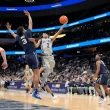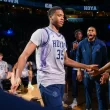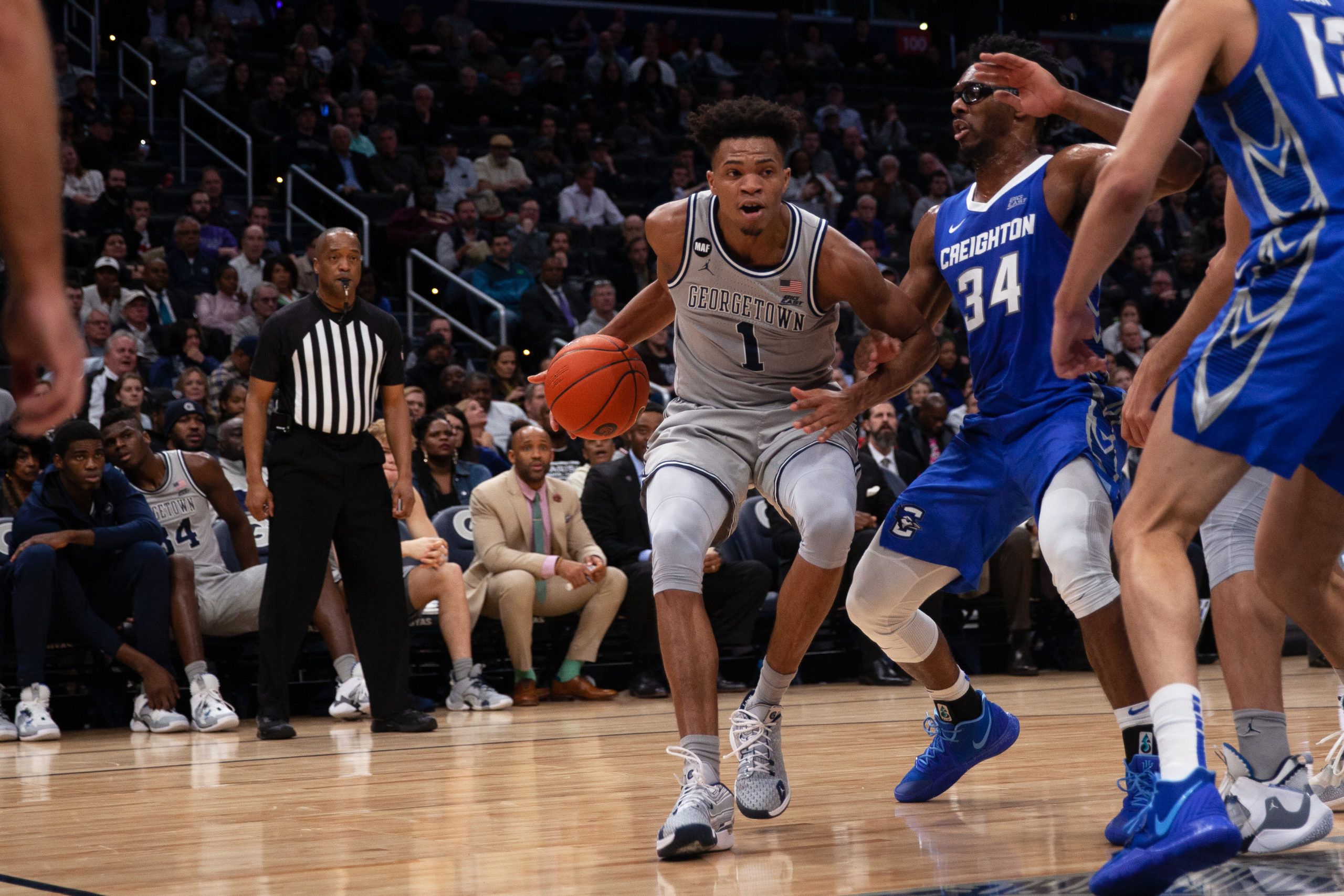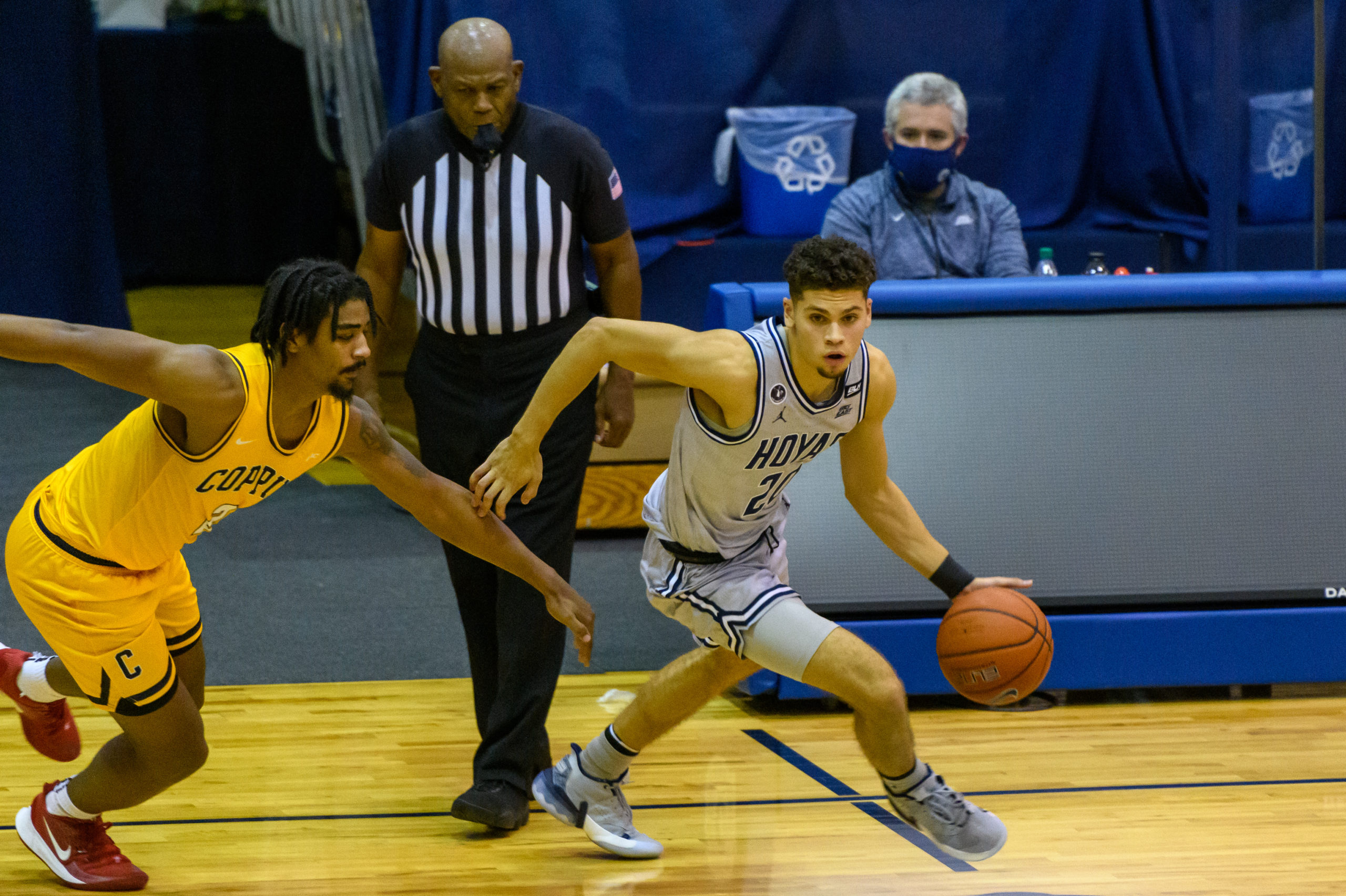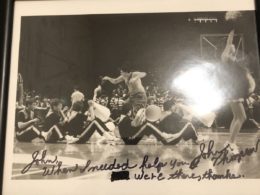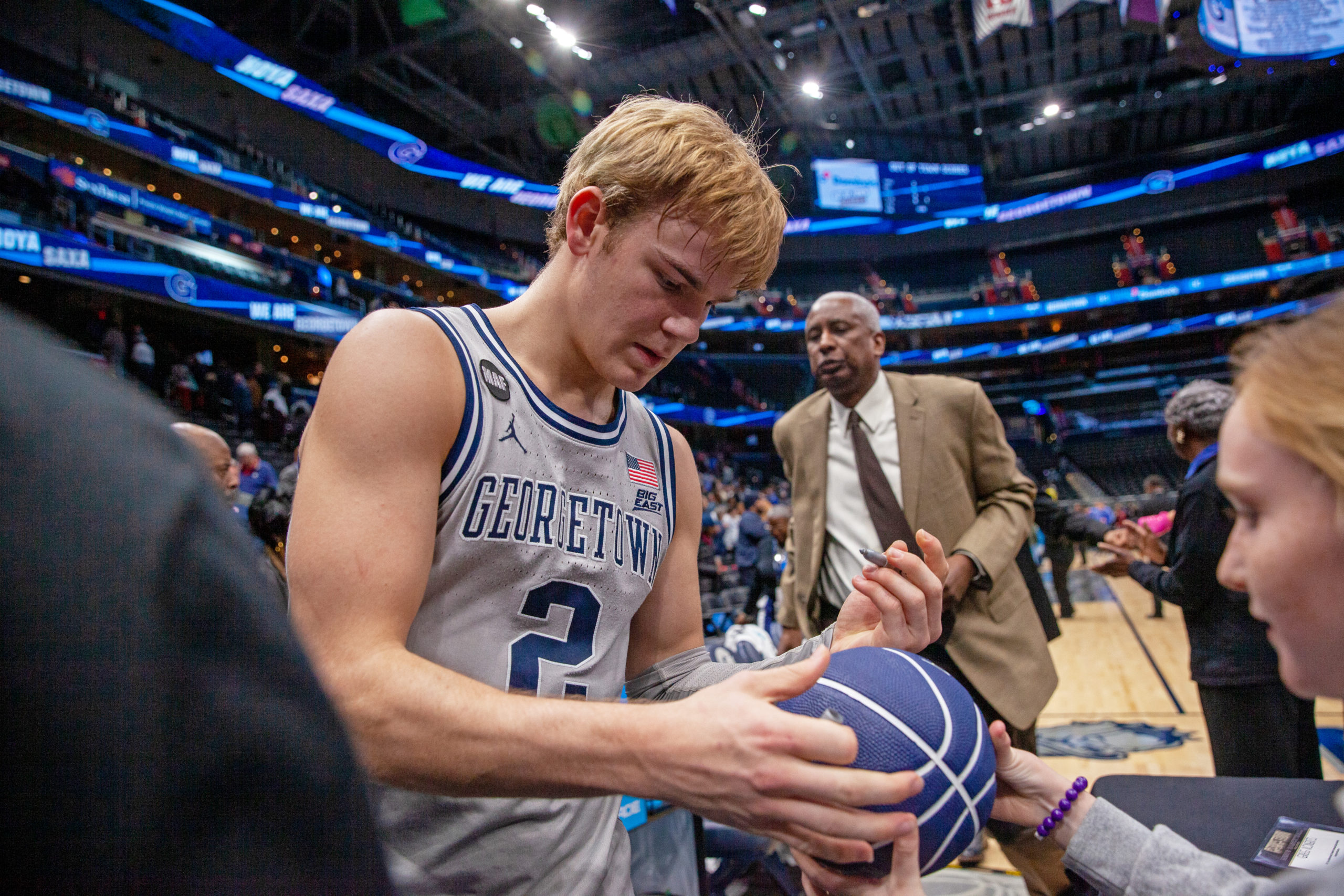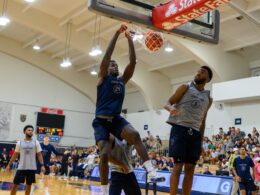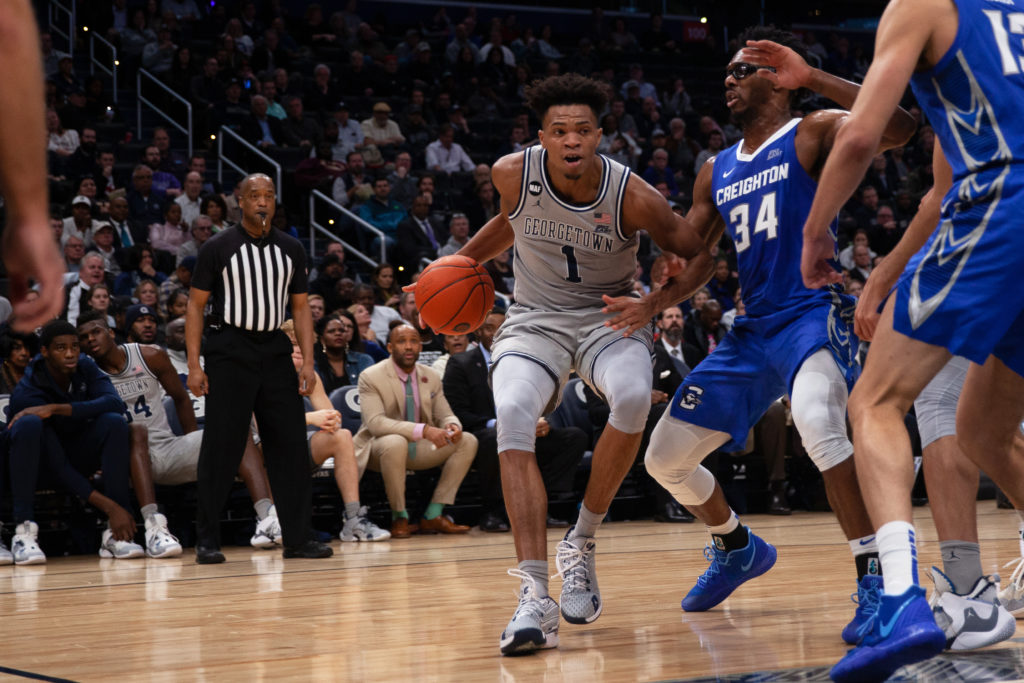
Jamorko Pickett moonlights as Hoya nation’s favorite punching bag. With the Kevin Durant comparisons and gripes about his untapped potential, it seems as though the Georgetown faithful can always find something to critique. Maybe it’s time we stop fantasizing about what Pickett could be and start talking about how far he’s come.
Even before the season tipped off, it was clear that this year would be make or break for Jamorko Pickett. What no one could have expected were the departures of fellow forwards Josh LeBlanc, Galen Alexander, and Myron Gardner, which left Pickett as the sole scholarship forward on the roster. The Hoyas were left with no Plan B; Pickett would have to play an instrumental role moving forward.
Physicality and Rebounding
With Georgetown having to rely almost exclusively on a three-guard look, Pickett has been asked to step into a more physical role. At 6’8”, Pickett has always had the length, but his strength has been a cause for concern, as Jamorko weighs in at just 206 pounds. These concerns were not unfounded either, as Pickett averaged under four rebounds per game each of his first two years on the Hilltop.
Over the course of the Hoyas’ first nine games this season, Pickett upped that mark to 5.1 rebounds per contest. However, since the Syracuse game, which was the first with the team’s new-look roster, Pickett has been even more active on the glass, averaging just over 6.5 rebounds per game. Pickett’s newfound physicality was on full display in Georgetown’s win over St. John’s on Jan. 8, when he posted a career-high 11 boards en route to his first career double-double. “Jamorko Pickett, man, what a game,” said teammate Mac McClung after the victory. “That’s my bro right there, and he had a great game.”
Iron Man
Another overlooked element of Pickett’s contributions to this year’s team is the endurance and durability he has shown. After averaging 23.6 minutes per game during his sophomore year and 25.8 minutes per game during this year’s non-conference slate, Pickett has played over 30 minutes in each of Georgetown’s first five Big East games. With no obvious replacement off the bench, Pickett’s ability to stay on the floor has been crucial to the Hoyas’ success.
In fact, the two games in which Pickett has played the most minutes have been Georgetown’s two conference victories. He first logged a then career-high 37 minutes in last week’s win over St. John’s. Pickett proceeded to break that mark while seeing 38 minutes of action in the Hoyas’ win over #25 Creighton this past Tuesday. “Jamorko played his butt off,” Ewing said about Pickett’s performance against the Bluejays. Pickett will likely need to continue to put forth similar efforts if the Hoyas are to continue their winning ways.
Offensive Aggression
Perhaps the most noticeable area of improvement has been the change in Pickett’s mindset on the offensive end. With his uncanny combination of length and athleticism, fans often clamor for Jamorko to attack the rim more often. And he’s done exactly that.
Over the course of Pickett’s sophomore season, a whopping 56.7% of his field goal attempts came from beyond the three-point arc. Fast forward to this season, and that number has decreased to just 28.5%. Jamorko is no longer a one-trick pony offensively.
While this season’s scoring numbers may not jump off the page, the eye test tells a different story of Pickett’s season. Rather than settling for contested jumpers, Pickett has started to make an effort to get all the way to the rim.
In the clip above, Pickett recognizes that Creighton’s Ty-Shon Alexander is unwilling to help off of McClung in the corner and exploits the opening. When the help finally comes from the Creighton big, Pickett is deep enough in the lane that he can use his length to sneak the lay-up past the defender’s outstretched arm.
While it has been nice to see Pickett take on more of a slasher mentality, this does not mean he should stop shooting threes. Quite the contrary, actually. Pickett is knocking down 36.6% of his looks from deep on the season, thus defenders have no choice but to respect his shooting ability. This spaces the floor and creates driving lanes for both him and his teammates.
In the clip above, Pickett catches on the pick-and-pop, forcing the ‘Nova defender to step up to challenge a potential three-point look. With the defender’s momentum pulling him away from the basket, Pickett wisely attacks off the dribble, gets to the block and finishes it high off the glass.
What does all this mean?
Last year, Pickett operated almost exclusively as a defensive specialist, with the added bonus of knocking down the occasional open three. This year, he has seen more minutes and taken advantage, playing the physical brand of basketball that Ewing loves.
This does not mean Pickett has been flawless, far from it in fact. For one, he still seems to force a handful of difficult jumpers per game. While Pickett may occasional make these shots, they are nowhere near as effective as getting to the rim and either finishing or drawing a foul.
Speaking of drawing fouls, Pickett could certainly get to the free throw line more often. While Pickett’s 2.1 free throw attempts per game is a clear improvement on last year’s 1.1 such attempts per contest, it would be nice to see this number increase further. To do this, the focus needs to be going up strong and not shying away from contact, something Pickett still needs to improve upon.
Regardless, the progress Jamorko Pickett has made this season has been a huge positive for the Hoyas. As solid as Pickett’s been this season, he will need to be just as good, if not better, the rest of the way if Georgetown is to contend in the Big East. WIth Omer Yurtseven and Mac McClung firmly established is the team’s top two scorers, Pickett may be Ewing’s best hope at finding a reliable third option moving forward.
